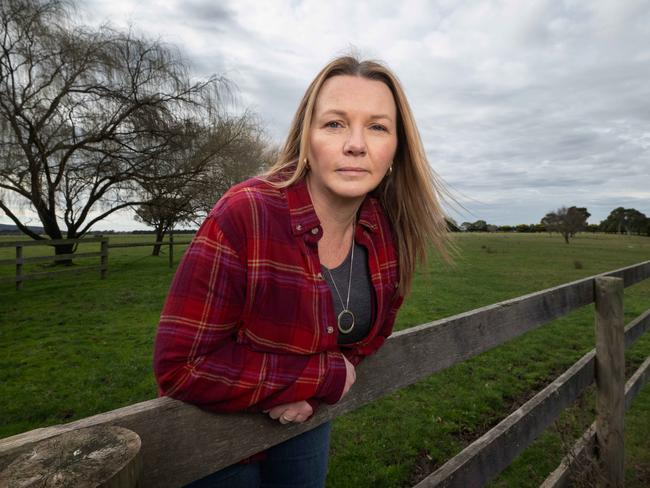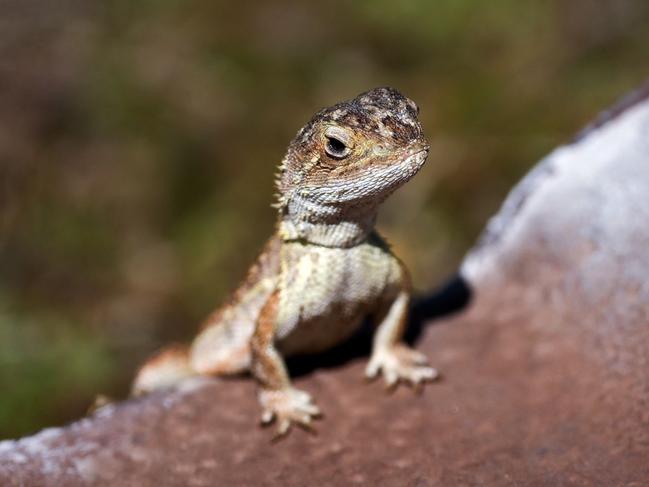Macedon Ranges Shire Council blocks plan for ‘village-like’ community with 1400 new homes
Gisborne locals have been locked in a seven-year battle with the local council over a plan to build a “village-like” community with more than 1000 affordable homes. Now, the dream is all but over.
Victoria
Don't miss out on the headlines from Victoria. Followed categories will be added to My News.
A plan for a “village-like” community along Melbourne’s outer fringe is among key developments being blocked or delayed amid the state’s housing crisis, preventing families and first home buyers from getting into the market.
In the sleepy town of Gisborne in Melbourne’s outer northwest, locals have been locked in a seven-year battle with the council over the plan to build the “unique” new community for thousands of residents.
The 217ha site in Gisborne, dubbed Glen Junor, would provide 1400 affordable homes, a community food garden, extensive bike paths, nature reserves and a new school.

Glen Junor is also home to legendary Australian jockey Harry White’s beloved racehorses, with his most-cherished Melbourne Cup winners “Think Big” and “Hyperno” buried at the site.
But the shovel-ready plan for the 20-minute “walkable neighbourhood” has been repeatedly rejected by the Macedon Ranges Shire Council, despite years of comprehensive planning and widespread local support.
Developer Max Shifman said the council had been “flatly refusing” to consider Glen Junor, despite the proposal offering it a chance to reach its housing targets.
He also noted that 70 per cent of respondents to a recent survey had told the council they did not support its structure plan for Gisborne’s future, which excludes Glen Junor.
“Why on earth would the council continue down this line?” Mr Shifman asked.
In 2017, the land was rezoned to allow for only 64 one-hectare properties, with Mr Shifman saying the choice was between plots for 60-odd farmers or homes for people who needed them the most.

Gisborne local Kylie Ball, who lives in Harry White’s former home on the sweeping property, said, if developed, the 1400-home community would have a “village feel”.
“It would be an incredible way to share the beauty and the history of the property with many, offering a variety of housing options to suit a variety of budgets,” she said.
“There is genuinely something magical about the property.”
At a council meeting last week, councillors endorsed the structure plan for a “protected settlement boundary” around the town, which excluded Glen Junor.

Macedon Ranges Shire mayor Annette Death said there were a number of reasons why the site was left out.
“These include its significant distance from existing and proposed neighbourhood activity centres, community amenities and transport facilities; the existing low-density zones that segregate it from New Gisborne residential areas; and the precedent it may set for further developer-led rezoning,” she said in a statement.
“The council is confident that … we’ve landed on a balanced plan that supports sustainable, adequate growth for Gisborne and New Gisborne until 2050.”
But Ms Ball said the plan for Glen Junor has its own neighbourhood activity centre, including a business hub with shared meeting spaces to support people working from home.
The fate of Glen Junor now rests in the hands of the state government, which will determine whether it should remain excluded and the plan for only 64 plots proceeds.
But Mr Shiffman said “everywhere you look” across Melbourne’s outer suburbs there were homes being held up by councils.
“They’re just not doing their job to actually cater for future population growth,” he said.

Victorian Villawood Properties general manager, Andrew Duggan, said a key project in Melbourne’s southeast that would bring approximately 15,000 new homes to the market was facing planning delays of more than five years, due to red tape and ongoing policy changes.
The site, located in Clyde South, will also rack up “millions and millions of dollars” in land tax bills for developers regardless of the planning delays, he said.
“I’ve been in the development industry for 20+ years and precinct structure plans 10-15 years ago had the ability to be completed in 18 months from start to finish”, he said.
“The government, and other agencies and authorities, have effectively created so many new requirements and bureaucracy that these processes are now so extrapolated that it is substantially contributing to the housing crisis and housing affordability.”

Urban Development Institute of Australia chief executive Linda Allison said the state government could be headed for a potential shortfall of 80,000 homes across the decade on greenfield sites, according to its modelling.
“There is a lack of sense of urgency around coming to a resolution for some of these developments … particularly around things like drainage and infrastructure provisions,’ she said.
“It’s a bit of a cascading effect.”
Ms Allison also flagged that increasingly stringent cultural heritage requirements and the rediscovery of the Victorian grassland earless dragon in Melbourne’s west were also holding up housing developments across Melbourne’s fringe.
“From an industry wide perspective, it is taking much longer for cultural heritage management plans to be approved than they did five years ago,” she said.
A Victorian government spokesman noted Victoria was building more homes than any other state and said a new team had been established to help councils keep permit applications out of VCAT.
City of Casey Chair of Administrators Noelene Duff said the current planning process can take “several years to resolve”.
“This precinct is key to unlocking not only housing, jobs and services our residents need, but also the land use planningforthe extension of the Cranbourne rail line through to Clyde,” she said.
“Overall, the City of Casey’s population has increased from 260,000 in 2011 to 410,000 in 2024 — the largest in the state. By 2046, the City of Casey is estimated to have a population exceeding 570,000.”
More Coverage
Originally published as Macedon Ranges Shire Council blocks plan for ‘village-like’ community with 1400 new homes




